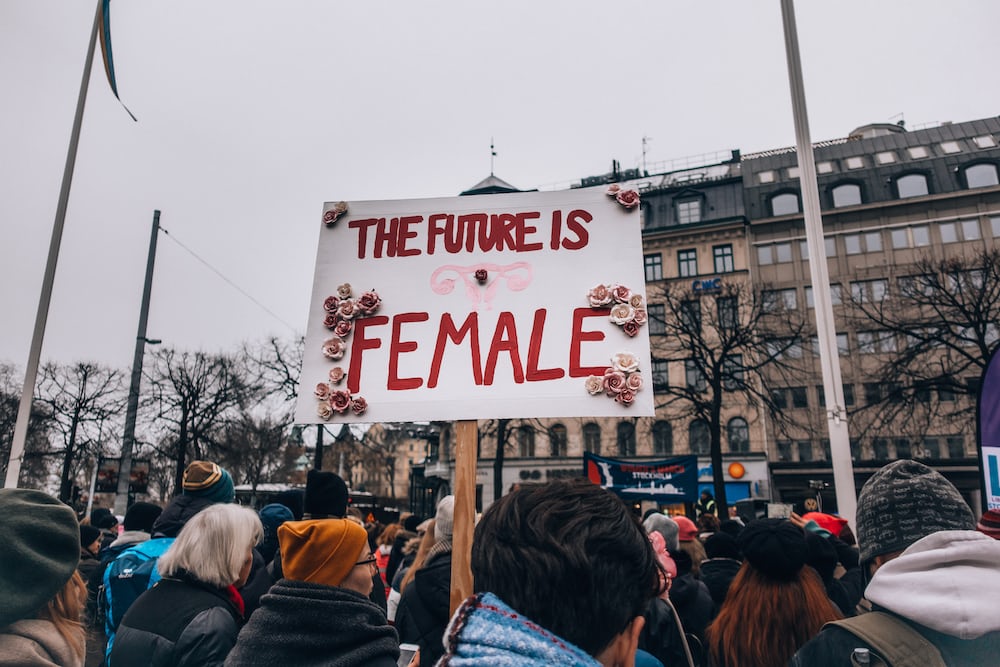"Because I am a woman, I must make unusual efforts to succeed. If I fail, no one will say, 'She doesn't have what it takes'; They will say, 'Women don't have what it takes.'"

August 17, 2023

Women, Find Your Voice
We believe that healthy, educated and empowerment women and girls are agents of change.
When women and girls are supported, they gain opportunities to speak up for their rights, amd aslo to advocate for their communities. They are also able to rise in social standing, and they can feed this into future generations.
This mean women’s organisations, women’s empowerment policies and women’s charities can gain momentum and contribute to a stronger world.
Women are gradually moving into non-traditional and higher income earning opportunities in science, technology, engineering and mathematics. Forty three per cent of the total graduates in these sectors are now women though the overall rate of young women finishing tertiary degrees is still quite low at 17 per cent.
Why is women’s empowerment so important?
Empowering women is essential to health and social development of families, communitirs and countries. When women are living safe, fulfilled and productive lives, they can reach their full potential.
Contributing their skills to workforce and can raise their happier and healtheir children. They are also able to help fuel sustainable economies and benefit society and humanity at large.
Women’s influence is mediated through household relations. Household relations can be influenced by changes in legislation (for instance, domestic violence legislation); changes in policy and services (for instance, provision of early childhood services freeing women’s time for other productive activities); and provision of basic services (more educated men and women will be more likely to bend gender norms to enable women to work). Women’s decision-making in ‘household governance’ is a critical factor of women’s empowerment.
Women’s political representation at national level remains a mixed picture with 78 women in the Lok Sabha out of 543 members in total, and 11 women ministers in Cabinet. This is an historic high, although India has yet to reach 30 per cent women in Parliament which is considered critical mass to accelerate the impact of women’s influence. Although the current percentage is modest, it is a remarkable result given the fact that women barely made up one percent of the overall candidates in 2019 elections. Therefore, women candidates won at a strike rate of 73 per cent as opposed to their male counterparts at 66 per cent.
In the 2019 elections, women’s participation as voters exceeded that of men for the first time. The gender gap, or the difference between female voter turnout and male voter turnout, has not only closed but reversed to 17 per cent in the 2019 Lok Sabha elections. Women themselves have become a political force. This suggests an increasing assertion of citizenships rights amongst women. The growing turnout of women voters will influence political parties’ priorities and responsiveness to women voters’ interests.
In the private sector in recent years, the Government and the Securities and Exchange Board of India (SEBI) have mandated at least one woman on boards of directors. There are now 777 women sitting in private sector boards across India.
Prime Minister, Narendra Modi, has declared “Women Led Development”, recognising the catalytic role that women play if they can influence and lead development decisions. During Covid, India released a range of social protection measures designed to provide a safety net for women and men. The ₹6,28,993 crore relief package was one of the biggest social protection measures announced in the world. Millions of women (and men) were held out of poverty because of this initiative. On the most basic level, reducing poverty, and decreasing inequality, is fundamental to unlocking women’s voice and agency as they still often sit at the bottom of the economic pyramid, facing intersecting social and political identities that affect their ability to exercise their rights – gender of course, but also class, caste, race, ethnicity, religion, to name a few.
Since then, India has continued to improve on opening up spaces for women’s influence. Panchayats now have over 1.3 million elected women representatives in India, no doubt adding to the public good measured in 2004.
Air India v. Nargesh Meerza (1981
In this case, an inclusive reading of Article 14 was done by the Supreme Court and it was decided that employment cannot be denied to any person on the grounds of sex. For inflight services, stress was laid on the height of the youth, appearance, and glamour quotient of the employees.
An aviation company called Air India regulated that the air hostesses should retire if they reach the age of 35, conceiving a child, or on marriage whichever occurs earlier. These conditions were derogatory and offending and hence challenged in the court and were later struck down.
Vineeta Sharma v. Rakesh Sharma (2020)
In this case, the Supreme Court held that daughters will have equal coparcenary rights in the Hindu Undivided Family by their birth and cannot be excluded from inheritance irrespective of whether they were born before the amendment of 2005 to the Hindu Succession Act.
What are the government’s initiative for the women?
The Government’s initiative to count women’s unpaid domestic labour in time use surveys is to be lauded for this has revealed that women work more than five hours extra (7.2 hours/day) providing care within families, than men who work 2.8 hours/day. Women’s attention to care work remains a key issue to solve between women and men, if women are to have the same ability to contribute to public life and the economy, as men. Over the years, India has initiated a number of programmes to reduce the drudgery of domestic work and improve childcare support – India has one of the longest paid maternity leave provisions with up to two years paid leave for certain categories of government employees. Increasing the amount of paternity leave for men could also contribute to more equal sharing of the domestic care work responsibilities; thereby freeing up time for women for work outside the home.
“Women Led Development” can indeed be catalytic. India has done much to open up doorways for women’s leadership to accelerate achieving the SDGs. There remain some critical issues like increasing the numbers of women in Parliament. Building on the gains of the increased number of women in Parliament, women voters’ strength, and the current Government’s commitment to women’s empowerment, the Government could move to accomplish passing the Women’s Reservation Bill. Around the world, reaching the 30 per cent target of women’s representation, has rarely occurred without the introduction of temporary specific measures.
I believe that the challenges of women’s equal participation in the labour market and the extent of unpaid care work also remain. In India can solve these difficult and sticky issues, the country will accelerate economic growth and be able to lead the global discourse on this pervasive challenges that continue to persist in almost every nation in the world.

